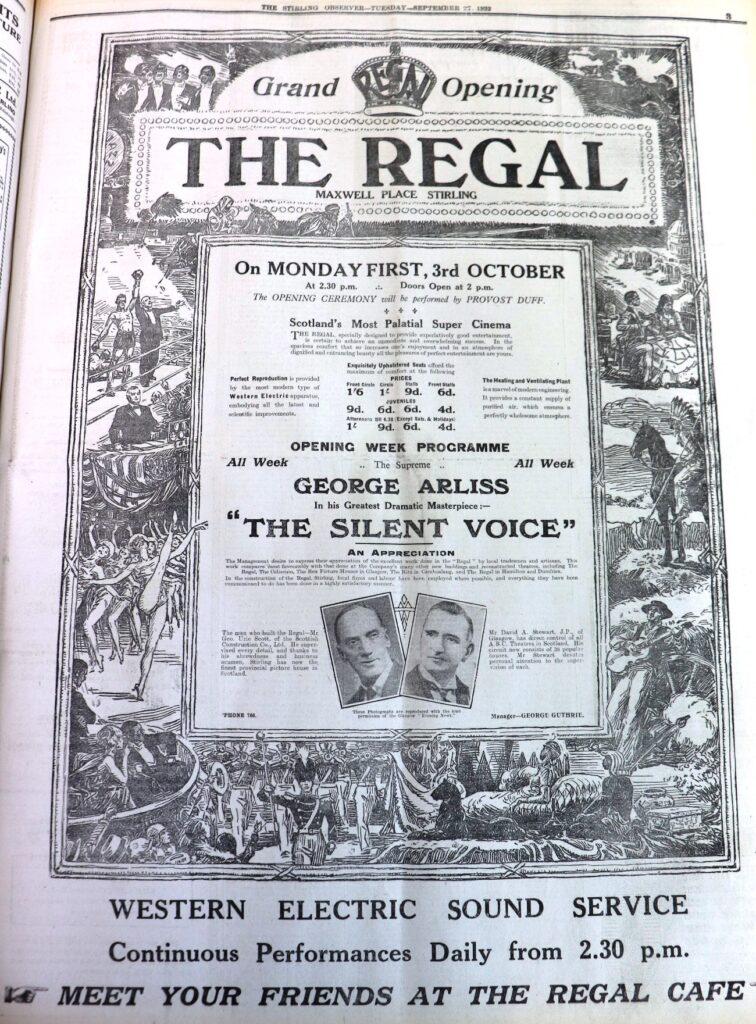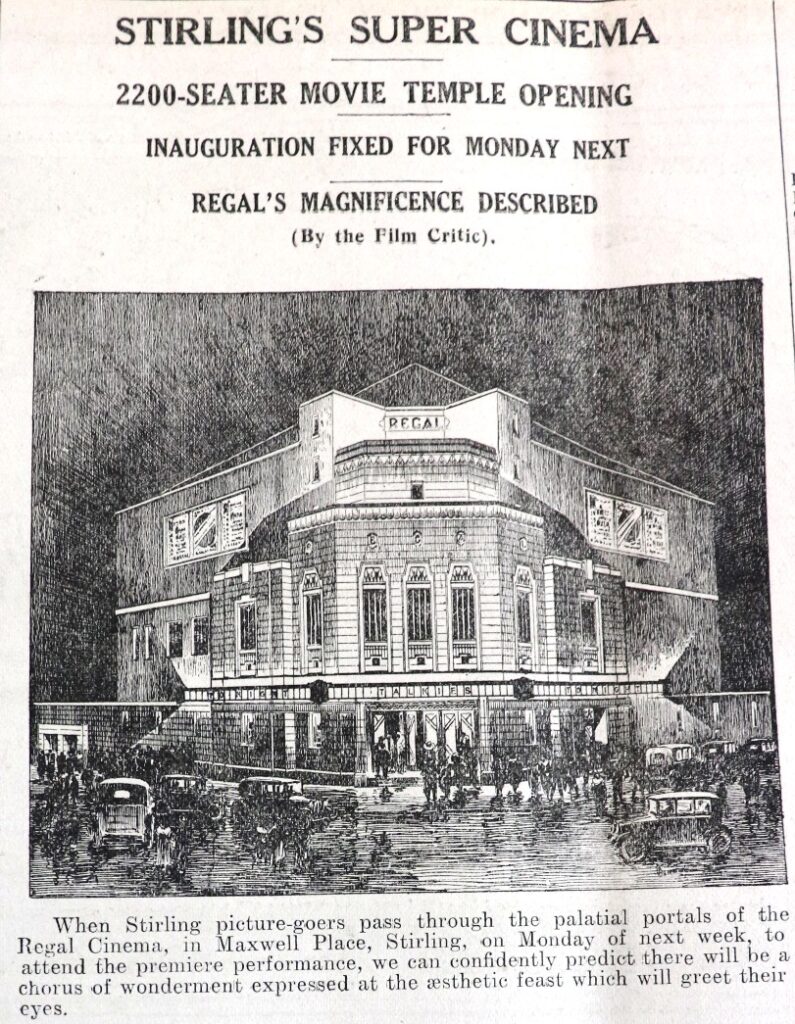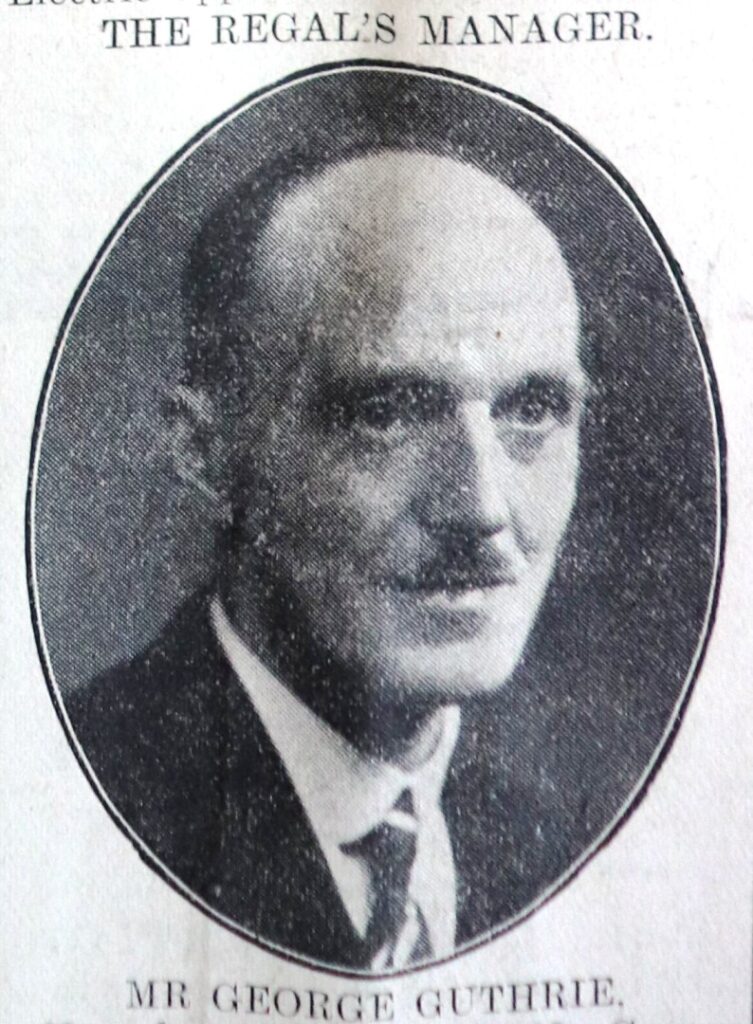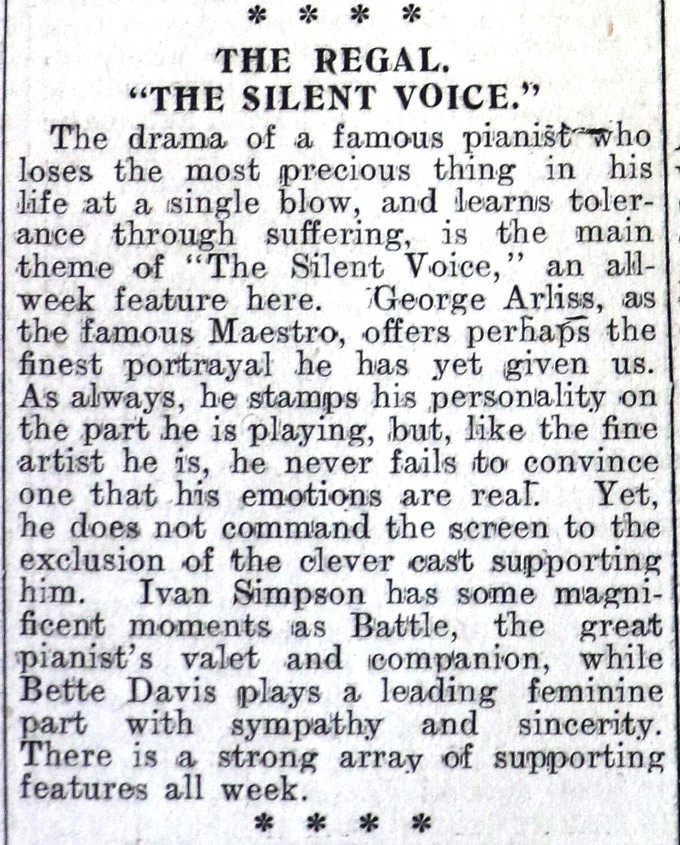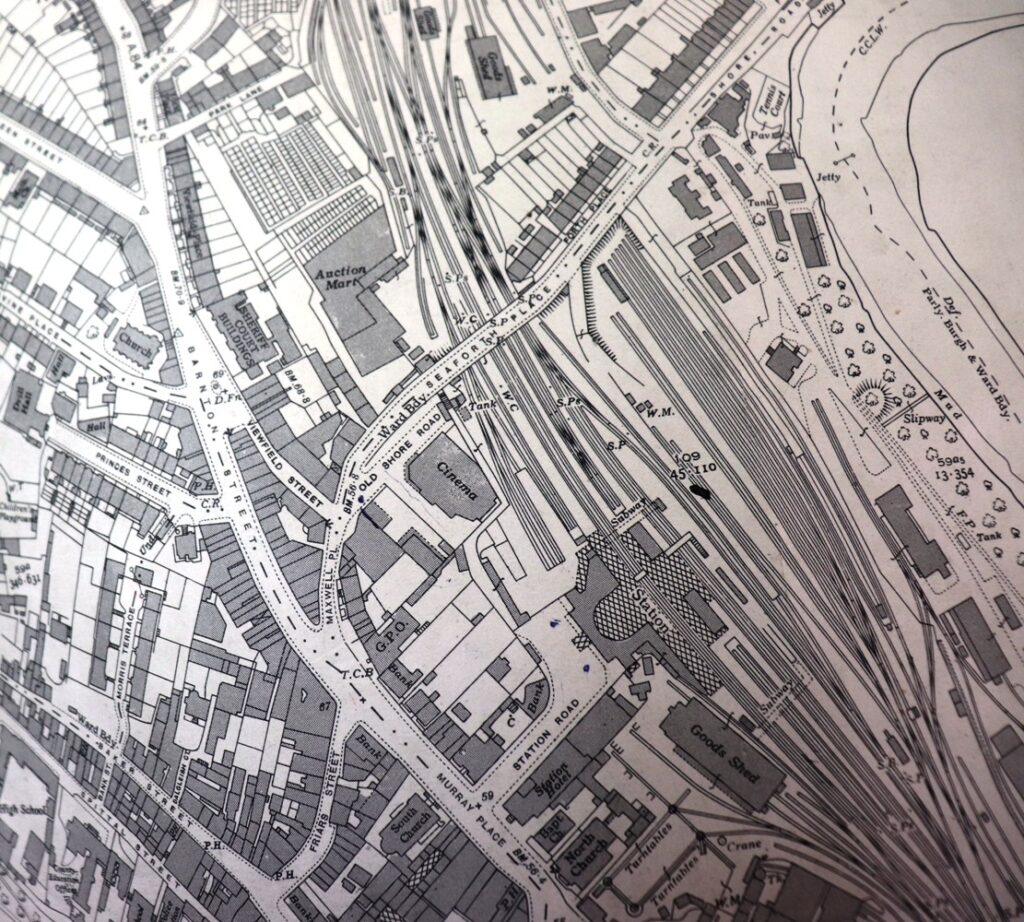In the aftermath of the 2023 Oscars season excitement, the Document of the Month for April shines a spotlight on the history of the silver screen here in Stirling.
Monday the 3rd of October 1932 marked the “Grand Opening” of the Regal cinema on Maxwell Place, Stirling. Dubbed “Scotland’s Most Palatial Super Cinema” in the Stirling Observer, the Regal’s opening received considerable newspaper coverage in the week preceding its opening. Two pages were dedicated to describing its various features and preparations for the opening, making it one of the biggest stories to be covered that week. This suggests that its opening was a highly anticipated and prominent local event which was generating considerable reader interest.
The ‘Grand Opening Ceremony’ itself was also heavily featured in the Observer, and was lauded as a great success and the beginning of a new luxury cinema-going experience for locals. A full-house of 2200 keen cinema-goers watched on as the Regal’s first manager, Mr George Guthrie, introduced Provost Duff, who ceremonially opened the cinema for business. This was followed by a screening of “The Silent Voice”, starring George Arliss as the inaugural picture shown.
Whilst the film shown was reviewed by the Stirling Observer Film Critic, it is important to note that the central focus of the coverage of the opening was not on the array of film it would screen, but rather on the Regal as a space. Mr George Urie Scott of Scottish Construction Co. Ltd. – who was in charge of the Regal’s construction and who also spoke at the opening ceremony- declared it to be “the last word in cinema construction”. This assertion was enthusiastically backed by the Stirling Observer’s Film Critic, who hailed its exceedingly comfortable ‘exquisitely upholstered seats’, waiting halls, and ‘toilet accommodation of the most modern kind’. Additional attention was given to the impressive ‘Artistic Lighting Effects’. These luxuries were clearly intended to set the Regal apart from the existing picture-houses in Stirling, as highlighted by the fact that it was compared to the bigger city cinemas in Glasgow and Edinburgh.
Rather than being compared to the more local picture houses such as the Randolph or the Regent, for example, the Regal, Stirling, was likened to her sister cinema- the Regal, in Sauchiehall Street, Glasgow. This new Regal was clearly and intentionally marketed as providing a city experience in a smaller locality, setting it apart from anything seen in Stirling before. In fact, as the thirty-ninth cinema built by the Regal Company, this new Regal was lauded as ‘the most perfect cinema they had yet built’, surpassing any cinema-going experience which could be had in a city. Focus was also placed upon the transformative powers which it was believed this ‘super-cinema’ would have for Stirling- notably by complementing its ‘first-class shopping centre’. The writer of the Observer article detailing the opening suggested that the arrival of the ‘Regal’, alongside Stirling’s vibrant shopping scene would completely eliminate the need or desire among locals to travel into cities regularly.
A further attraction of the Regal was that it had a café which customers could visit without having to buy a film ticket, showing that the picture-house as a destination and as a leisure space was often even more exciting to cinema-goers than the films on display. A visit to the Regal was the event in itself, with the addition of a film screening an added bonus. This was often the way cinema-going was perceived in Britain in the 1930s- the act of going to the cinema was primary activity and the actual films themselves quite often of secondary importance to the cinema-goers.
Yet, that is not to say that the films on show were of no importance. Mr David A. Stewart J.P. of the Associated British Cinemas Circuit was also in attendance gave a few words at the opening ceremony. He drew attention to the way in which the Regal would strive to support British film in particular- an important point for him to highlight considering the fact that the advertised opening film: “The Silent Witness” was a Hollywood production. This statement connected the cinema-goers of the local Stirling to a wider community of British film supporters. The list of impressive qualifications of the manager George Guthrie, included in the Observer, further stressed this idea of the Regal in Stirling as being at the forefront of modern British cinema. It was noted that Guthrie had managed ‘many of the biggest cinemas in the country’, including the New Gallery, London, and the Grosvenor in Glasgow.
Tributes were also paid to the numerous workers and contractors who had had a hand in the construction of the art deco style building, recognising the importance of local efforts. The building itself was asserted to be ‘the last word in cinema construction’, and stood on Maxwell Place in the heart of Stirling town centre until its demolition in 1968.
Our Document of the Month for April provides a snapshot of the excitement and considerable public interest and anticipation surrounding the opening of the Regal in 1932, reflecting the developing perceptions of cinema-going in Britain during the 1930s as a luxury yet affordable leisure activity and a place for far much more than just watching films.
